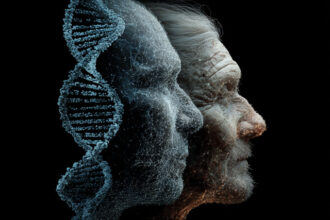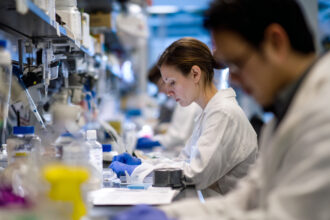Researchers at the University of California San Diego School of Medicine have recently published groundbreaking results that shine a new light on the age-old question of what triggers ageing at a molecular level. Their findings, which appear in Nature Aging, reveal an unprecedented link between two widely accepted theories of ageing: random genetic mutations and predictable epigenetic modifications. Traditionally, the scientific community has used epigenetic modifications as the epigenetic clock theory as a reliable, quantitative benchmark for biological ageing. This theory posits that ageing occurs due to the accumulation of epigenetic modifications—minor changes to the chemical composition of DNA that affect gene expression without altering the DNA sequence itself.
However, the new insights from the study suggest that the ageing process is more complex than previously understood. Trey Ideker, PhD, a professor at the UC San Diego School of Medicine and the UC San Diego Jacobs School of Engineering and co-corresponding author of the study, commented on the implications of these findings for anti-ageing strategies. He noted that many leading research institutions and companies are investing in reversing the epigenetic clock to mitigate the effects of ageing. However, Ideker suggested that these approaches might only address the symptoms of ageing rather than tackle its underlying causes. He proposed that if genetic mutations are indeed triggering epigenetic changes, this could fundamentally change how we approach anti-ageing efforts.
The scientific community has long debated the mechanisms behind ageing, focusing primarily on two theories. The somatic mutation theory suggests that ageing results from accumulating random mutations—permanent changes to the DNA sequence. In contrast, the epigenetic clock theory suggests ageing occurs due to the build-up of epigenetic modifications. Unlike mutations, some epigenetic changes can be reversed. Epigenetic modifications are more straightforward to quantify than random mutations because they occur at specific sites on the genome, making them a popular method for scientists to determine the “biological age” of cells.
Researchers analyzed data from 9,331 patients catalogued in the Cancer Genome Atlas and the Pan-Cancer Analysis of Whole Genomes to explore this area further. They discovered a predictable correlation between genetic mutations and changes in DNA methylation, a type of epigenetic modification. The team found that a single mutation could trigger a cascade of epigenetic changes across the genome, not just at the mutation site. Using this relationship, they were able to make similar predictions about age using either mutations or epigenetic modifications.
Zane Koch, the study’s first author and a Ph.D. candidate in bioinformatics at UC San Diego, underscored the significance of these findings. “Epigenetic clocks have been around for years, but we’re only now beginning to understand why they tick,” he said. Koch’s research demonstrates for the first time that epigenetic changes are intricately and predictably tied to random genetic mutations, providing new insights into the fundamental nature of ageing.
The authors note that further research is needed to fully understand the relationship between somatic mutations and epigenetic changes in ageing. However, the study’s findings provide a significant breakthrough in our understanding of the ageing process and have important implications for developing new therapies to prevent or reverse ageing. Steven Cummings, M.D., co-corresponding author and executive director of the San Francisco Coordinating Center at UC San Francisco, added, “If somatic mutations are the fundamental driver of ageing and epigenetic changes simply track this process, it’s going to be a lot harder to reverse aging than we previously thought.” This suggests a shift from viewing ageing as a programmed process to one largely influenced by random, cumulative changes.
More information: Zane Koch et al, Somatic mutation as an explanation for epigenetic aging, Nature Aging. DOI: 10.1038/s43587-024-00794-x
Journal information: Nature Aging Provided by University of California – San Diego








